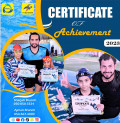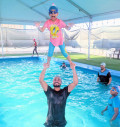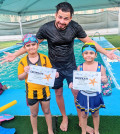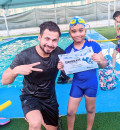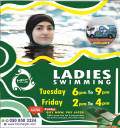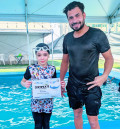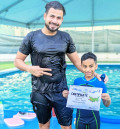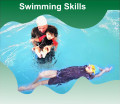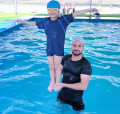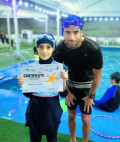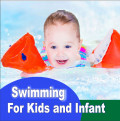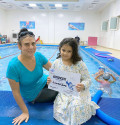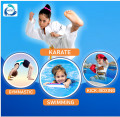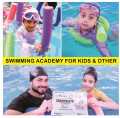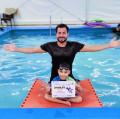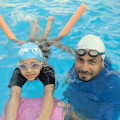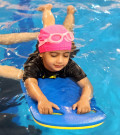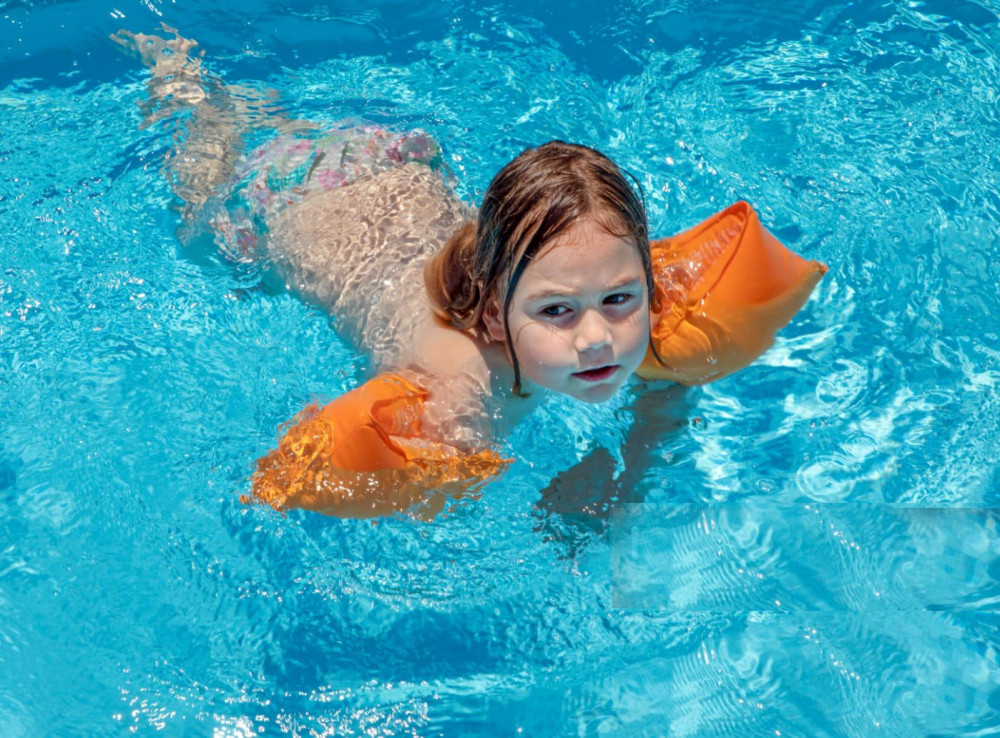
Swimming Skills for Kids like a Fish a Comprehensive Guide
2024-01-12 - swimmingIntroduction
Embarking on the journey of teaching kids swimming skills
like a fish is both exciting and rewarding. This comprehensive guide will take
you through essential aspects, providing valuable insights and tips for a
successful swimming journey for your little ones.
Swimming Skills for Kids like a Fish a Comprehensive
Guide
Developing Water Confidence
Instilling water confidence lays the foundation for
impeccable swimming skills. Create a positive and enjoyable atmosphere to help
your child feel at ease in the water. Familiarity breeds confidence, and
confidence is the key to swimming success.
Floating Techniques for Beginners
Teaching kids to float is a crucial step. Introduce simple
floating techniques, emphasizing relaxation and body positioning. Encourage
them to embrace the buoyancy of the water, fostering a sense of weightlessness.
Submerging with Ease
Submerging is a skill that can be challenging for beginners.
Guide your child through gradual submersion exercises, making it a fun and
playful experience. This builds comfort and prepares them for more advanced
underwater activities.
The Butterfly Stroke Breakdown
Perfecting the Dolphin Kick
The dolphin kick is a fundamental component of the butterfly
stroke. Break down the kick into manageable steps, ensuring your child
understands the rhythmic movement of their legs. Consistent practice will lead
to mastery.
Coordinating Arm Movements
Coordinate the arms with the dolphin kick to simulate the
fluid butterfly stroke. Emphasize the importance of synchronized movements,
allowing your child to grasp the stroke's elegance while enhancing their
swimming efficiency.
Overcoming Challenges in Swimming Skills
Addressing Fear of Deep Water
Many kids face a fear of deep water. Gradually introduce
deeper sections, always maintaining a supportive environment. Patience and
encouragement play pivotal roles in helping them overcome this fear.
Dealing with Water in the Nose
Water in the nose can be uncomfortable. Teach your child
proper breathing techniques, emphasizing exhaling through the nose while
submerged. This skill not only enhances comfort but is crucial for overall swimming
proficiency.
FAQs
How can I encourage my child to enjoy swimming?
Create a positive
association with swimming through fun activities and praise. Ensure the
environment is relaxed, and consider enrolling them in swimming classes with
engaging instructors.
At what age should I start teaching my child to swim?
It's ideal to start
around the age of 4, but every child is different. The key is to introduce
water activities gradually and adapt to your child's comfort level.
Are floatation devices necessary for beginners?
Floatation devices can provide added safety for beginners,
but the goal is to transition away from them as your child becomes more
confident and skilled.
How can I help my child overcome a fear of putting their
face in the water?
Start with simple
activities like blowing bubbles in the water. Gradually progress to submerging
their face, always offering positive reinforcement and support.
What stroke is easiest for kids to learn first? The
backstroke is often recommended for beginners as it allows them to focus on
kicking and floating without the added challenge of coordinating arm movements.
Is it safe to teach my child to swim without professional
lessons?
While teaching your
child to swim is possible, professional lessons offer structured guidance and
safety measures, ensuring a more comprehensive learning experience.
Conclusion
Nurturing swimming skills for kids like a fish is a journey
filled with joy and accomplishment. By following these expert-guided tips and
insights, you're setting the stage for your child to become a confident and
skilled swimmer.







.jpg)




















